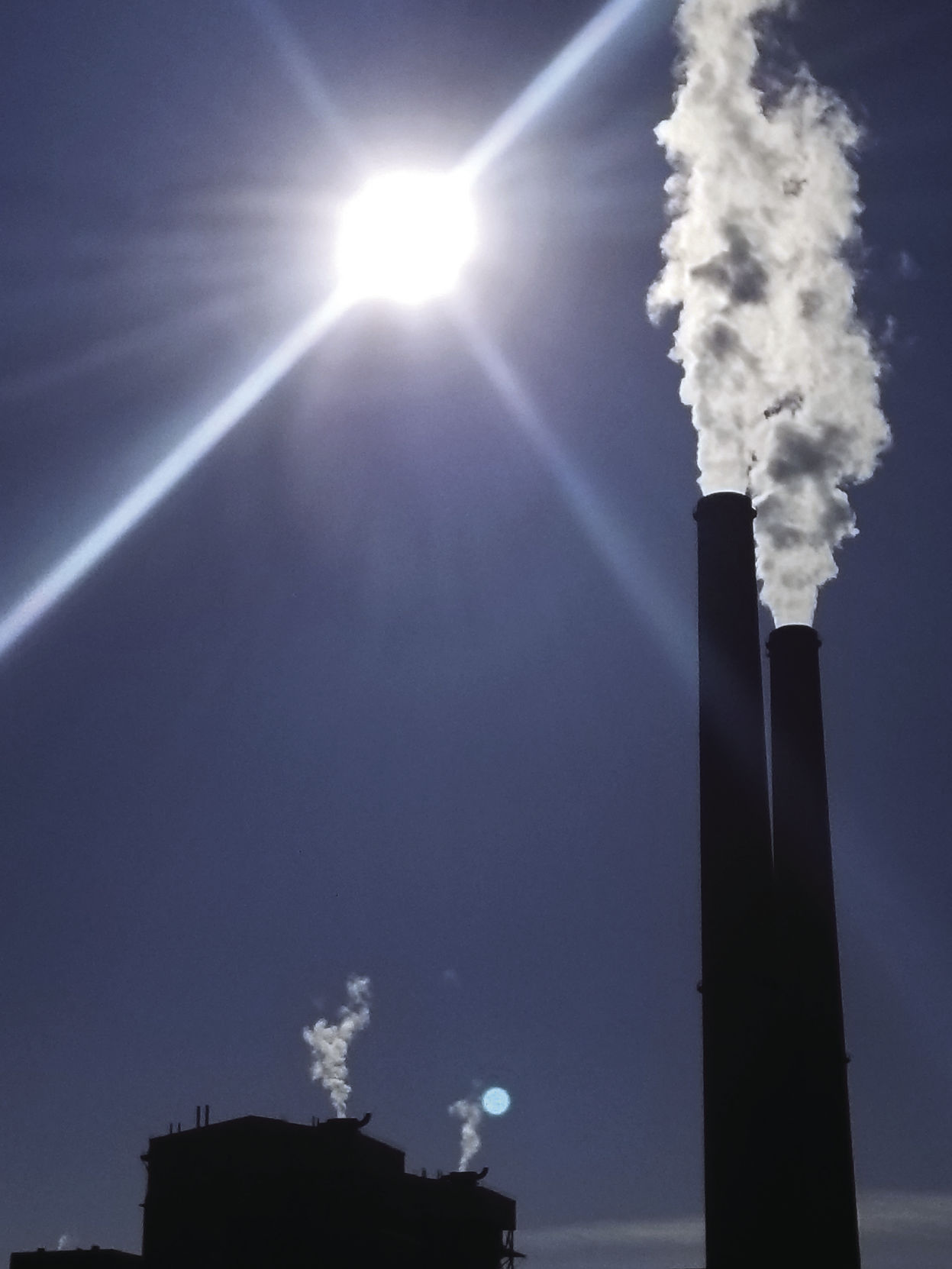The easy answer as it relates to coal power plants in this area – is that you take an energy source, coal, and turn it into heat to make electricity.
In other words, coal energy is released as heat. Water is heated in a boiler until it becomes high-temperature steam. This steam is channeled through a turbine, which has many fan-blades attached to a shaft. As the steam moves over the blades, it causes the shaft to spin. The spinning shaft is connected to the rotor of a generator, and the generator produces electricity.
And that is all there is to making electricity from coal. Well, maybe there is a little bit more to the process. Let’s break it down to the different aspects of the process as it relates to the Huntinton Power Plant west of Huntington.
Coal
Coal is delivered to the plant by trucks. Between 180 and 240 truck loads of coal are delivered each day from Sufco, Skyline, Dugout and Rhino coal mines. They deliver about 2.7 million tons of coal each year.
The coal is rated at 11,000 to 12,000 British Thermal Units with 10 to 12 percent ash, which is one of the best sources of coal in the United States.
The plant tries to have 400,000 tons of coal on hand and will burn about 7,000 tons a day.
The coal is delivered to the power plant where it is placed in hoppers. As more heat is needed, the coal is pulverized into a talcum powder consistency and blown into pipes leading into the boiler.
Coal is fed into the furnace that contains miles of steam pipes where it is blown in with air from four different sides of the furnace box and at an angle that forces the coal dust to swirl around the boiler like a tornado. This allows for all of the coal dust to burn.
About 700,000 to 800,000 pounds of coal powder are burned every hour.
Water and boiler
All water used in the process of making electricity is filtered and purified because there can be no impurities in the water.
The water is heated to boiling where the steam is collected and heated in a seven step process to about 800 degrees Fahrenheit. From there it is superheated to 1000 F and is ready to be piped to the generator.
The boiler is suspended from supports 280 feet up in the air. This hanging design allows for the boiler metal to expand up to 2 feet as it heats up. The expansion elongates the boiler towards the bottom, so the entire unit has to be suspended from above.
The flame in the boiler needs to burn a bright orange meaning it has the right amount of coal dust and air for a maximum efficient burn.
There are hundreds of miles of piping needed in the process of super-heating water and steam to 1000 F.
Generator
The plant can produce 450 megawatts of power at full capacity, and this full capacity is needed several times during the day to keep up with demand. Overall the generators are producing an average of about 300 megawatts.
This is done by taking superheated 1000 F dry steam blowing over a pin-wheel style set of blades that turn a shaft.
This shaft is connected to a generator where wires are wrapped in a certain way and spin on a shaft in the middle of a magnetic field that moves atoms back and forth to create electric current.
The turbine has to run at a constant 3,600 revolutions per minute – no faster – no slower.
When demand for electricity increases, more heat and steam are needed to turn the turbine.
The shaft turns as it rests on an oil film only 5 thousandths of an inch thick. It is completely balanced.
The turbines are shut down every four years for cleaning and adjustments.
Bag house and scrubbers
Air used in the burning process is taken to a bag house where the impurities are removed. The bag house has 8 cells with 5,000 bags per cell.
The bags are 28 feet tall and 12 inches in diameter. The air is forced through the outside of the bag to the middle (opposite of a vacuum cleaner). The impurities collect on the outside of the bag and are quickly cleaned by letting the impurities drop to the floor where they are collected and hauled away.
This process removes any mercury that might have been in the coal. The plant produces only about 4 pounds of mercury a year. It is very hard to detect.
The air is piped to the scrubber area where it is exposed to a lime solution that stripes the sulfur.
The remaining clean air is allowed to be taken up the huge stacks where excess steam is released. It is steam that you can see being released from the stacks.
The operations room
Rows of computers are used to keep track of the process as used in making electricity. In fact, these computers analyze every six seconds over 25,000 alarm points located throughout the plant.
They are watched over 24 hours a day, seven days a week.
How do you make electricity?

Power Plant
